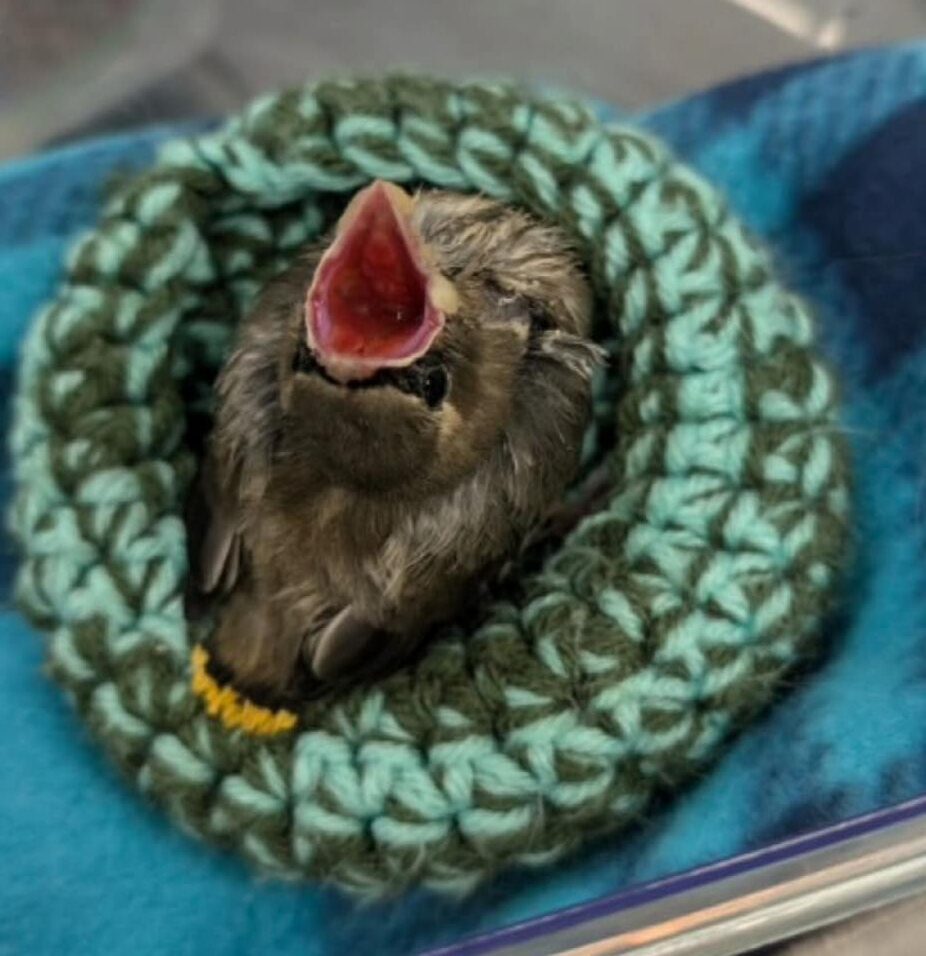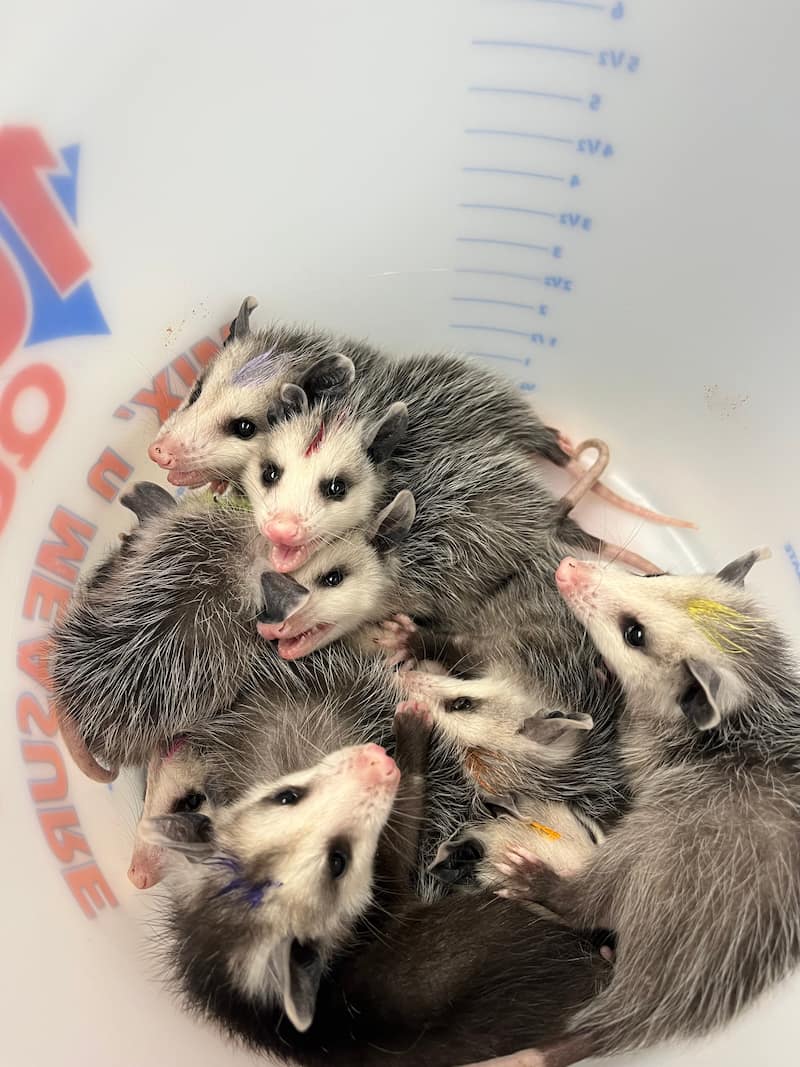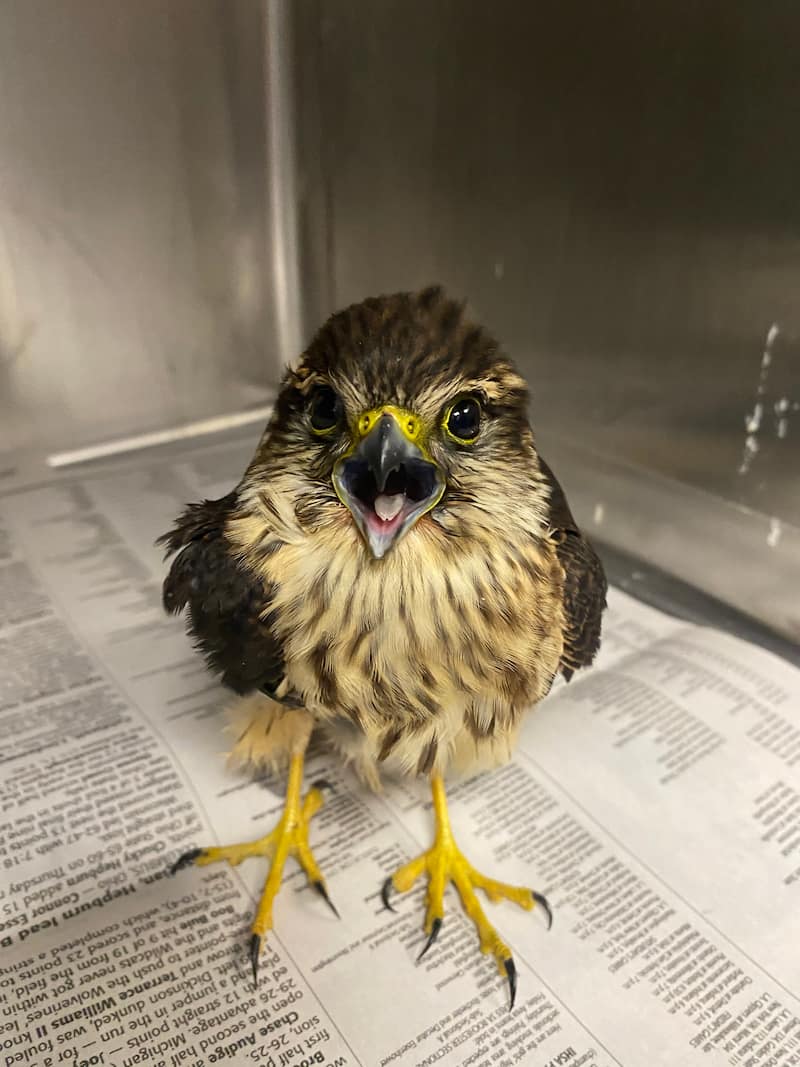Erin Newman, VM18
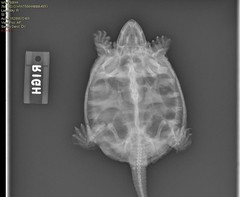
A juvenile snapping turtle was found in a yard and brought into the Wildlife Medical Clinic in August. He had a cut on his neck right where it joined his shell and scrapes all over the top of his shell, along with a couple of shell fractures. The neck wound was very dirty, with maggots living in it, but volunteers thoroughly cleaned it out and sutured it up. Whenever a turtle has a shell fracture, it is at risk for damage to its coelomic membrane, which separates the shell from the body cavity. Radiographs were taken to determine whether the membrane was punctured, but luckily the snapper did not have any injury to his lungs or coelomic membrane.
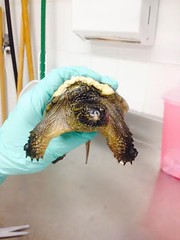 Snapping turtles prefer to spend their days under water in areas of vegetation, with their nose poking up just above the water surface, as if it were a snorkel. Although they can grow very large and are dangerous when cornered, they would prefer to swim away from trouble. A snapper has a long, flexible neck that can reach all the way to its hind limbs, so the safest way to handle them is just above the tail. Our patient was probably 3-4 years old, only about the size of a hand, and not very threatening. Snapping turtles do not eat very often, and enjoy fish, worms, and greens.
Snapping turtles prefer to spend their days under water in areas of vegetation, with their nose poking up just above the water surface, as if it were a snorkel. Although they can grow very large and are dangerous when cornered, they would prefer to swim away from trouble. A snapper has a long, flexible neck that can reach all the way to its hind limbs, so the safest way to handle them is just above the tail. Our patient was probably 3-4 years old, only about the size of a hand, and not very threatening. Snapping turtles do not eat very often, and enjoy fish, worms, and greens.
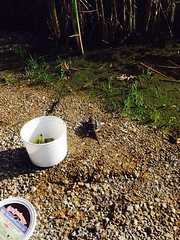
The turtle had a surgery to repair his shell and was placed on antibiotics. After monitoring the wounds for over a month, it was decided that they would heal nicely on their own without further care. The snapper was very excited to be released into a pond at a forest preserve and went into the water without a backward glance!

